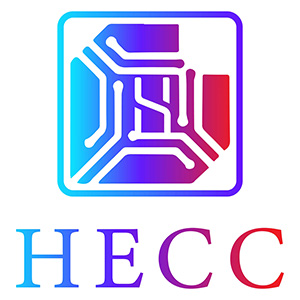With the development of the Internet of Things, people's dependence on various products is increasing. Do you often feel headaches due to messy charging cables, and frequent plugging and unplugging of charging cables can also cause certain damage to the charging interface.
Wireless charging technology has emerged, which uses wireless pipelines to transfer electromagnetic field energy from the charging board to the device's battery, providing the required energy to the device.
Wireless charging provides great convenience, whether you place it on a workbench, on your bedside table at home, or sandwiched between car vents. A wireless charger allows your electronic devices, such as your smartphone, sports watch, wearable device, or e-cigarette, to charge continuously. Wireless charging technology for electric vehicles has also made significant progress in recent years.
Wireless Charging Will Set Us Free!
What is wireless charging
Wireless charging is a pipeline that does not require the use of cables to charge devices. A common wireless charger is usually a mat or tablet, which can be charged by placing a compatible wireless charging device on it. Wireless charging uses electromagnetic fields to transfer energy from the charging board to the device's battery. The charging board is connected to the power supply to provide the required energy for the device.
Wireless Charging Will Set Us Free!
A typical wireless charging system includes a sender and receiver, each with a flat coil. According to Faraday's law of electromagnetic induction, a conductive substance produces an electric current when it passes through a magnetic field. By electromagnetic induction, an electromagnetic field is used to transfer energy between two objects to charge the battery. Meanwhile, through signal modulation, the sender and receiver can communicate with each other, allowing the charging board to adjust its output power based on the charging stroke.
At present, there are two main standards for wireless charging. Qi standard and PMA standard. Both standards are based on the principle of electromagnetic induction to charge devices, and the key difference lies in the different wavelengths used.
PMA Wireless Charging: The abbreviation for Power Matters Alliance, which uses the wavelength range of 277-357 kHz for PMA wireless charging standards.
Qi wireless charging: pronounced "chee", Qi wireless charging was created by the Wireless Power Consortium (WPC). It operates in the frequency range of 100-205 kHz.
Advantages and disadvantages
We take three typical wireless charging applications, namely electric vehicle wireless charging, cabin wireless charging, and electronic cigarette wireless charging, as examples to analyze and understand the benefits, challenges, and future development of wireless charging from large to small.
Wireless car charging
As the name suggests, wireless car charging does not require a physical connection between an electric vehicle (EV) and a charging station/station to charge the car. Charging is done through electromagnetic fields and wireless pipes, rather than inserting cables into the vehicle.
Wireless car charging usually involves two parts: a charging board installed on the ground and a receiver at the bottom of the car. When the car is parked on the charging board, the receiver detects the electromagnetic field and converts it into electrical energy to charge the battery.
Convenience is one of the main advantages of wireless car charging. It eliminates the need for manual insertion of charging cables, which is particularly important in space limited environments, while also reducing wear and tear on charging ports. Another benefit of wireless car charging is safety, as there is no physical connection between the car and the charging station, so there is no risk of electric shock or tripping over cables. Wireless charging boards can be embedded in the ground to make them less noticeable and reduce the risk of weather or human damage.
Wireless Charging Will Set Us Free!
However, the efficiency of wireless car charging is also a major drawback. The efficiency of wireless charging is usually lower than traditional cable charging, which may result in longer charging time and higher costs. Wireless charging requires specialized equipment, and its installation and maintenance costs may be higher than traditional charging infrastructure.
Cabin wireless charging
Cabin wireless charging refers to the use of wireless charging technology in the cabin of a vehicle to charge mobile devices such as smartphones and tablets. As more and more people use mobile devices during their travels, the demand for cabin charging solutions is also increasing.
Wireless charging in the cabin typically involves installing a wireless charging board on the vehicle's central console or dashboard. This charging board utilizes electromagnetic fields to transfer energy to the device's battery, eliminating the need for cables. This allows drivers and passengers to charge their devices during the journey.
In recent years, many car manufacturers have started offering wireless charging as a standard or optional feature. For example, many new models from BMW, Audi, and Mercedes Benz are equipped with wireless charging pads as part of their infotainment systems.
Wireless Charging Will Set Us Free!
There are several benefits to wireless charging in the cabin. Firstly, it eliminates the need for cables, which is particularly valuable in the limited space of the car, effectively avoiding clutter and inconvenience in the cabin. Secondly, cabin wireless charging is safer than traditional charging methods because it eliminates the risk of being tripped by wires or affecting driving.
However, like other forms of wireless charging, using wireless charging in the cabin also has some drawbacks. The main issue is compatibility, which means not all devices are compatible with all charging boards. In addition, wireless charging in the cabin may not be as fast or efficient as traditional wired charging, which can be a challenge for people and devices who need to charge their devices quickly
Wireless charging e-cigarette
Electronic cigarettes, as a means for people to quit traditional cigarettes, have become increasingly popular in recent years. The working principle of e-cigarettes is to heat a liquid containing nicotine and other chemicals, producing vapor that is inhaled into the user's body.
Electronic cigarettes typically come with a rechargeable battery that requires frequent charging. In the past, this was done by connecting a USB cable to a power source, such as a computer or wall outlet. However, more and more e-cigarettes now have wireless charging capabilities.
The wireless charging of e-cigarettes is achieved through a charging case. The box contains a wireless charging board that uses electromagnetic fields to charge the battery of the e-cigarette. Users only need to put the e-cigarette into the charging case and it will automatically start charging. The charging case can be connected to the power supply via USB or wireless channel to charge its own battery.
Using wireless charging makes e-cigarettes easy to carry and concealed, and can also help extend the lifespan of e-cigarette batteries, reducing wear and tear on the charging port.
Wireless Charging Will Set Us Free!
With the continuous advancement of technology and the increasing demand from consumers for more convenient and efficient charging solutions, wireless charging is expected to become an ubiquitous part of our daily lives.
Let's unleash the power of wireless charging and embrace the freedom of movement.

 Aaron
Aaron 